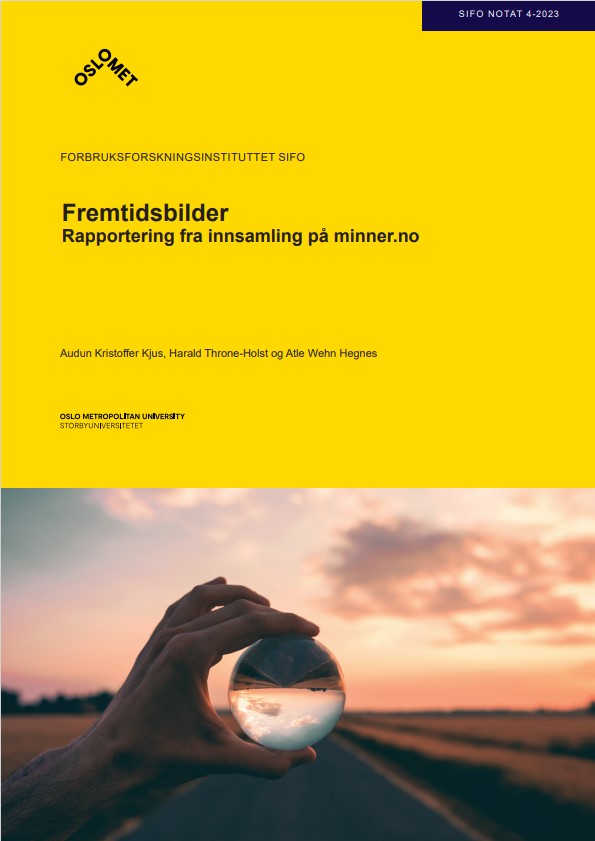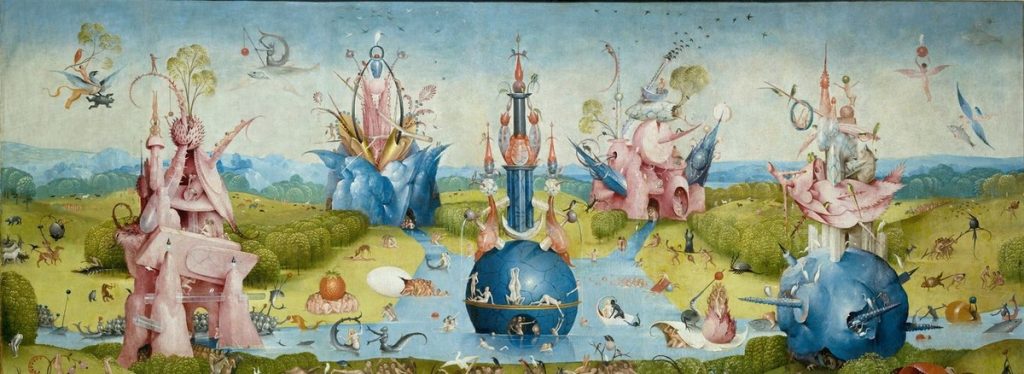What do Norwegian consumers think about the future of eating, dressing and moving?
This summer, the project note “Images of the future. Reporting on the minner.no data collection”, was published. Written by Audun Kjus, Harald Throne-Holst and Atle Wehn Hegnes, it is based on a collection of stories about the future from Norwegian consumers.
This is a deliverable from Work Package 2 – “Explore” in the research project IMAGINE: Contested Futures of Sustainability. The aim of the WP is to collect narratives about the future from the Norwegian population through a questionnaire distributed in collaboration with the Norwegian Ethnological Research (NEG). The note examines 123 stories, collected from May 2022 to June 2023.

We asked one of the authors, Atle Wehn Hegnes, to tell us about the report.
The report is in Norwegian, citing the Norwegian consumer stories, can you give an overview of what it contains for English-speaking readers? What can they expect to find in it when they use Google Translate?
The project note is divided into three main parts. The first part concerns background, objectives, methods, and sources. The second part, titled “Narratives,” looks into overarching themes and ways that people talk about the future, which include “the crisis ladder,” “modernity and morality,” and “frugality.” In the third part, “Dimensions,” we have identified some recurring themes in the material that appear across multiple narratives. The appendix presents the results in a matrix, showcasing the breadth of narratives about the consumption areas of food, clothing, and transportation. In sum, English-speaking readers, if they use Google Translate, will hopefully find a general presentation of future scenarios based on responses from 123 contributors. We hope that the narratives and themes can be understood as relevant to the ongoing discussions about the future of sustainability in Norway and insights into how the Norwegian population perceives and imagines different aspects of their future, especially related to consumption and sustainability.
What kind of stories did you find?
The stories we collected ranged from optimistic to pessimistic, shaped by contributors’ attitudes towards for example modernity, technology, and humanity’s potential.
Some optimistic stories embrace modernity and technology, seeing them as tools for positive change. Contributors expressed faith in technological advancements, such as implants for health monitoring or sustainable textile production, as a way to support freedom, reason, and global development. Some believed that people inherently desire cooperation, safety, and harmony, and that with time, they would overcome restrictive traditions and ideologies to create a better future.
Pessimistic stories, on the other hand, focused on the challenges posed by cultural, historical, as well as the influence of capital forces. They saw these obstacles as formidable counterforces against progress. While some acknowledged that renewal through research and idealism could lead to a better society, they expressed doubts that humanity would overcome ingrained greed and ignorance. They identified humanity’s inherent negative qualities as the fundamental problem, highlighting issues such as overconsumption, population growth, and the abuse of power by certain groups.
In the report, you describe how the topics of the stories shifted over time. What were these shifts?
The report reflects work that was carried out in the spring of 2023, using material that was collected from the spring of 2022 to the spring of 2023. A lot has happened during this period. The world was emerging from a pandemic but was at the same time entering into a war when the collection began. Around halfway through the period, ChatGPT was launched, electricity prices in Norway increased drastically, and the interest rate was on the rise. Our material shows that our imaginings of the future are shaped by these events and by the state of society today.
Were there findings that surprised you in particular?
In this early stage of analysis, the optimism about the past, and how it impacts our understandings and hope for the future, is something I find interesting. Although it may not be particularly surprising.
So then, what are the visions of the future of eating, dressing and moving among the respondents?
They are numerous and complex, and that is what makes IMAGINE, this material, and this project note exciting to work with further. We already now see that there are more people with visions for travel and food in the future than about clothing. This is interesting in the sense that it can tell us something about which areas of consumption are getting attention, and that this might change. However, it’s difficult to give a good answer to this question now, but I will hopefully give a more nuanced answer if you ask me the same question again in a few months.
The full report can be found here.

The questionnaire on minner.no remains open during the whole project period, so should you like to contribute as well, this is still possible.
